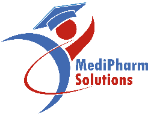Aggregate Reporting
Aggregate reporting in pharmacovigilance is a systematic process of compiling and evaluating safety information on a medicinal product from various sources over a defined period. It involves the analysis and summarization of safety data to provide an overall assessment of the product's benefit-risk profile.

Program Highlights

Modules-
20

HRS of Learning-
100+

Weeks -
6

FAQs-
150+

Real world Aggregate report Scenarios -
100+

Program Overview
The Aggregate Reporting in Pharmacovigilance course is designed to provide participants with a comprehensive understanding of the processes and requirements for compiling and evaluating safety data on medicinal products. Through a combination of theoretical knowledge and practical training, participants will gain the skills necessary to prepare high-quality aggregate reports in compliance with regulatory guidelines.
Program Objectives
- Provide an overview of aggregate reporting in pharmacovigilance, its significance, and regulatory framework (e.g., ICH E2E(R2)).
- Familiarize participants with different types of aggregate reports, including PSURs, DSURs, PBRERs, and RMPs, and their specific purposes.
- Train participants in the systematic collection and compilation of safety data from various sources, including clinical trials and post-marketing surveillance.
- Equip participants with the skills to conduct a comprehensive benefit-risk assessment based on aggregated safety data.
- Instruct participants on the identification and assessment of potential safety signals within aggregate data.
- Provide an understanding of risk minimization strategies and measures implemented to mitigate identified risks.
- Ensure participants understand the regulatory requirements for submitting aggregate reports to regulatory authorities.
- Emphasize the importance of accurate documentation and quality control measures in the preparation of aggregate reports.
- Train participants in effectively communicating safety information to healthcare professionals, patients, and regulatory authorities.
- Provide guidance on the process of updating product labeling based on new safety information.
- Engage participants in hands-on exercises and case studies to apply their knowledge in preparing aggregate reports.
- Duration: 6 weeks/months
- Delivery Mode: Online
- Instructional Methods: Lectures, Case Studies, Workshops, Group Discussions, Hands-On Exercises, Mock Report Preparation
- Quizzes and Knowledge Checks
- Case Study Analysis and Presentation
- Practical Exercises (e.g., Report Compilation, Benefit-Risk Assessment)
- Final Project: Preparation of an Aggregate Report

Target Audience
- Medical graduates with MBBS, MD, DO, Ph.Ds',
- Dental graduates with BDS, MDS, DMD, DDS
- Pharmacy graduates with B.Pharm, PharmD
- Ph.D
- Nursing graduates with RN, BS, LPN
- Majors in Biological Sciences/Life Sciences/allied health fields
- Pharmaceutical Quality analysts
- Microbiology, Biochemistry, Organic Chemistry and Biotechnology students
.
- Health Informatics
- Regulatory affairs
- Medical Affairs
- Clinical Research
- Clinical Data Management or Data sciences
- Clinical Trial Management
- Quality Assurance
- Quality Control
- Pharmacovigilance and Drug Safety

Certification
Upon successful completion of the program, participants will receive a Certificate in Aggregate Reporting in Pharmacovigilance, demonstrating their proficiency in compiling and evaluating safety data on medicinal products.
Program Curriculum
Designing a comprehensive curriculum for an Aggregate Reporting program involves structuring a course that covers key theoretical concepts and provides hands-on training in practical skills. Here's a suggested outline for an Aggregate Reporting program:

- Definition and Significance of Aggregate Reporting
- Regulatory Framework (e.g., ICH E2E(R2), FDA, EMA)
- Types of Aggregate Reports (e.g., PSUR, DSUR, PBRER)
- Sources of Safety Data (Clinical Trials, Spontaneous Reports, Literature)
- Data Extraction and Integration
- Data Quality Assurance and Validation
- Principles of Benefit-Risk Evaluation
- Cumulative Benefit-Risk Profile
- Use of Quantitative and Qualitative Approaches
- Methods for Signal Detection
- Data Mining and Statistical Signal Detection
- Signal Evaluation Criteria (e.g., Temporal Relationship, Biological Plausibility)
- Risk Minimization Measures (e.g., Risk Communication, REMS)
- Evaluation of Effectiveness of Risk Minimization Strategies
- Regulatory Requirements for Risk Minimization
- Structure and Content of PSURs
- Structure and Content of DSURs
- Writing and Compilation of Aggregate Reports
- Structure and Content of PBRERs
- Benefit-Risk Assessment in PBRERs
- Components of RMPs and Risk Communication Plans
- Regulatory Requirements for Aggregate Reporting
- Submission Timelines and Formats
- Interaction with Regulatory Authorities
- Documentation Standards for Aggregate Reports
- Quality Control Checks and Validation
- Archiving and Retention of Aggregate Reports
- Effective Communication of Safety Information
- Engaging with Healthcare Professionals, Patients, and Regulatory Authorities
- Transparency and Accountability in Reporting
- Process for Updating Product Labeling based on Safety Information
- Regulatory Requirements for Labeling Changes
- Impact on Benefit-Risk Profile and Risk Communication
- Hands-On Preparation of Aggregate Reports
- Case Study Analysis and Presentation
- Simulated Report Compilation Scenarios
- Quizzes and Knowledge Checks
- Case Study Analysis and Presentation
- Practical Exercises (e.g., Report Compilation, Benefit-Risk Assessment)
- Final Exam or Capstone Project
- Guest Lectures from Industry Experts
- Mock Report Compilation Scenarios
- Regulatory Affairs and Compliance Workshops
Career Paths
Pharmacovigilance, as a critical aspect of drug safety, offers a range of career opportunities. Here are some common career paths in Pharmacovigilance::
- Responsibilities: Collect and evaluate adverse event reports, ensure compliance with regulatory requirements, and manage safety databases.
- Skills Needed: Attention to detail, knowledge of regulatory guidelines, strong organizational skills.
- Responsibilities: Assess and evaluate adverse event reports for causality and seriousness, provide medical expertise in safety assessment.
- Skills Needed: Medical background (e.g., PharmD, MD), clinical knowledge, analytical skills.
- Responsibilities: Oversee pharmacovigilance activities, ensure compliance with regulatory requirements, lead safety teams.
- Skills Needed: Leadership, regulatory knowledge, project management skills.
- Responsibilities: Develop and implement risk minimization strategies, conduct benefit-risk assessments, and oversee risk management plans.
- Skills Needed: Risk assessment, regulatory knowledge, communication skills.
- Responsibilities: Ensure compliance with quality standards, conduct audits and inspections, implement quality management systems.
- Skills Needed: Quality assurance knowledge, auditing skills, attention to detail.
- Responsibilities: Liaise with regulatory authorities, ensure compliance with pharmacovigilance regulations, and support regulatory submissions.
- Skills Needed: Regulatory knowledge, communication skills, attention to detail.
- Responsibilities: Analyze safety data to identify potential signals, perform benefit-risk assessments, and contribute to risk management strategies.
- Skills Needed: Analytical skills, statistical knowledge, pharmacovigilance expertise.
- Responsibilities: Conduct safety assessments in clinical trials, contribute to study protocols, and provide safety-related guidance.
- Skills Needed: Clinical research knowledge, medical background, analytical skills.
- Responsibilities: Provide training on pharmacovigilance principles, regulatory requirements, and case processing procedures.
- Skills Needed: Communication skills, knowledge of pharmacovigilance practices.
- Responsibilities: Offer specialized pharmacovigilance services to pharmaceutical companies, regulatory agencies, or research organizations.
- Skills Needed: Expertise in pharmacovigilance, business acumen, networking skills.
- Responsibilities: Analyze safety data, perform statistical analyses, and generate safety reports.
- Skills Needed: Statistical knowledge, data analysis skills, pharmacovigilance expertise.
- Responsibilities: Manage pharmacovigilance databases and IT systems, ensure data integrity and security.
- Skills Needed: IT skills, database management knowledge, attention to detail.

Remember, these career paths often have room for advancement, specialization, and crossover into related fields like regulatory affairs, clinical research, or quality assurance. Continuous learning and staying updated with industry trends and regulations are crucial for success in Pharmacovigilance.
